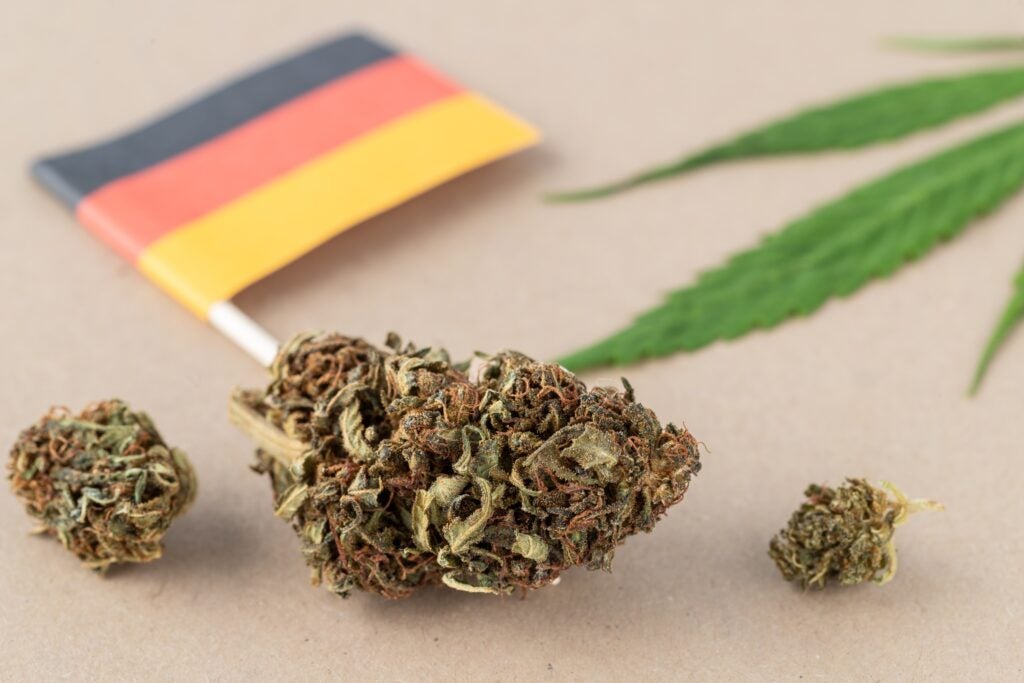[[{“value”:”
Germany’s cannabis landscape continues evolving at a rapid pace. From extensive pharmacy access to a surge in cultivation associations, the country’s dual-track model—medical and non-commercial adult use—has turned it into one of the most closely watched cannabis markets in the world.
Still, many in the industry argue that restrictive EU regulations are preventing Germany from reaching its full potential.
1 In 7 Pharmacies Now Dispenses Medical Cannabis
As reported by ICBC, roughly 2,500 of Germany’s 17,000 pharmacies now offer medical cannabis products—a dramatic expansion since legal access began in 2017. Patients can also order cannabis online with a private prescription and have it delivered directly to their homes.
According to the German Cannabis Business Association (BvCW), the country’s legal medical cannabis revenue is now estimated at around half a billion euros annually.
Yet that number only scratches the surface of the market’s potential. At ICBC Berlin, economist Beau Whitney presented data showing flower and extract sales dominate the German market due to a ban on edibles and other product formats. For comparison, U.S. 4/20 sales were only 41% flower, with the rest divided between vapes, edibles, pre-rolls and topicals.
The takeaway? Consumers who prefer smokeless options have limited legal choices in Germany, leaving the door open for the unregulated market.
Germany’s Cultivation Associations Are Growing Fast
Meanwhile, the number of licensed cannabis cultivation associations continues to rise. As of early May, Germany had approved 211 of the 624 applications submitted nationwide since the member-based model went live in July 2024.
The associations—legal under EU health policy frameworks—allow registered members to collectively grow cannabis for personal use. Though not commercial in nature, they offer a legal alternative for adults seeking safe, regulated cannabis outside the pharmacy system.
For perspective, Malta—another EU member state with a similar model—has issued 19 permits for its 570,000 residents. Applying Malta’s ratio to Germany’s population of 84 million implies that over 2,800 associations could eventually be formed.
Still, much remains in flux. Only 25 German applications have been formally rejected so far and many approved groups are still navigating the setup phase.
What’s Next?
Germany is already Europe’s largest cannabis market, and interest from international operators and policymakers shows no sign of slowing. But experts say broader legalization—including more product categories and commercial access—is essential to meet patient demand and curb illicit activity.
As the BvCW notes, “the industry’s revenue is now estimated at around half a billion euros”—but with edibles, national retail and broader exports still off-limits, the true ceiling remains far higher.
Stocks To Watch
Germany’s expanding cannabis market has attracted significant investment from major publicly traded companies. Here are some key players:
Tilray Brands TLRY: Tilray operates a GMP-certified cultivation facility in Neumünster and has recently expanded its medical cannabis offerings in Germany, including new extract formulations and high-THC flower strains under the Tilray Craft brand.
Aurora Cannabis ACB: Aurora launched its first domestically grown medical cannabis brand, IndiMed, cultivated at its EU-GMP facility in Leuna. This move positions Aurora as one of the few companies with local production capabilities in Germany.
Canopy Growth CGC: Canopy Growth has introduced its Tweed brand to the German medical cannabis market, expanding its product lineup with new strains through strategic partnerships with EU-based cultivators.
Curaleaf Holdings CURLF: Curaleaf has taken a majority stake in Germany’s Four 20 Pharma, enhancing its footprint in the European market and aiming to leverage Four 20 Pharma’s distribution network.
High Tide HITI: High Tide initially planned to enter the German medical cannabis market through the acquisition of Purecan GmbH. However, the company is currently reevaluating this strategy and exploring alternative arrangements to establish a presence in Germany.
Photo: Shutterstock
Price Trend
This content was partially produced with the help of AI tools and was reviewed and published by Benzinga editors.
Market News and Data brought to you by Benzinga APIs
© 2025 Benzinga.com. Benzinga does not provide investment advice. All rights reserved.
“}]] Germany’s cannabis access surges with 2,500 pharmacies and 211 grow clubs, but bans on edibles and retail sales still limit the market’s full potential. Read More


